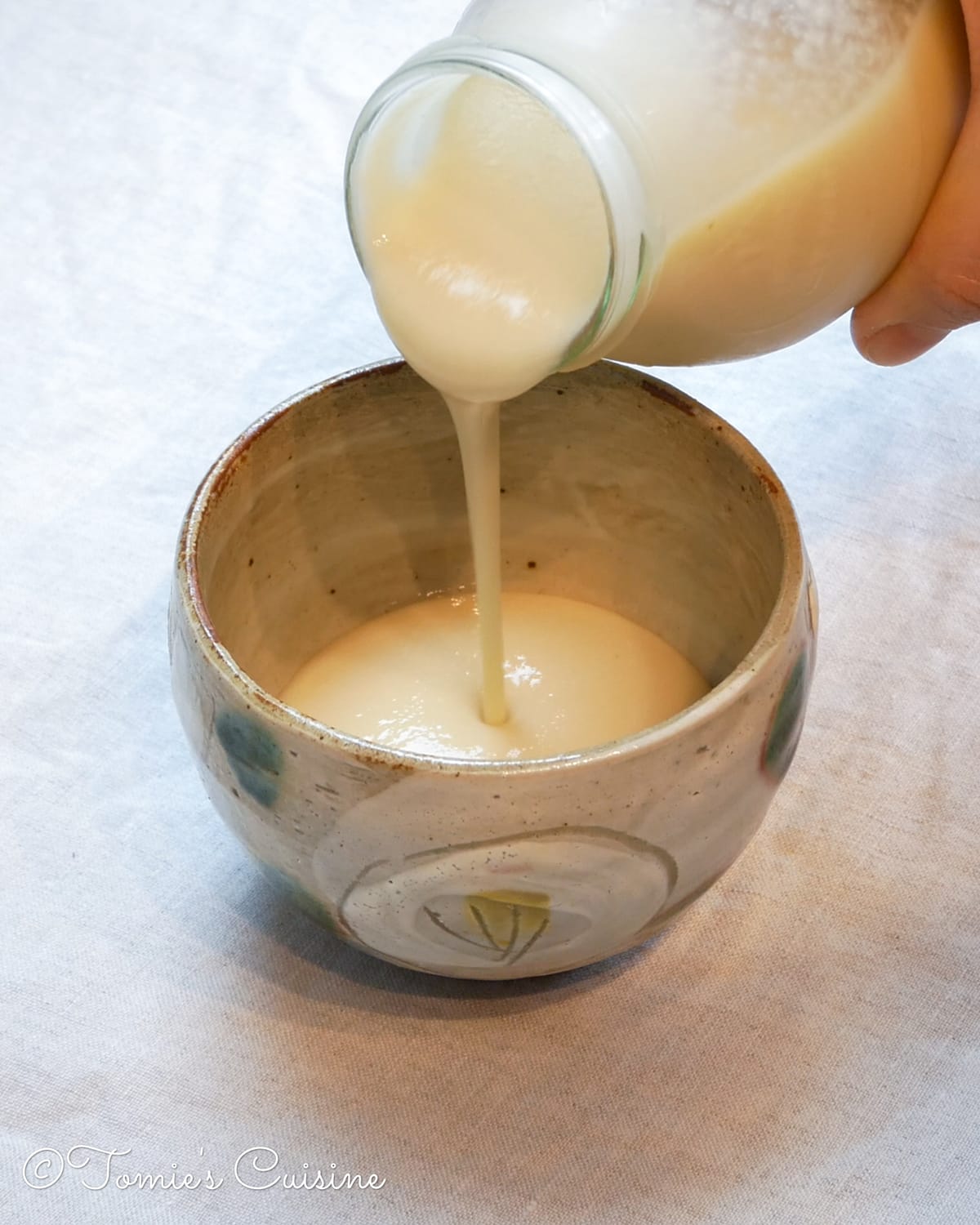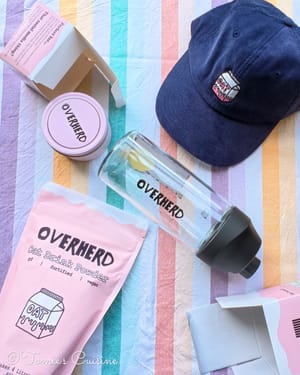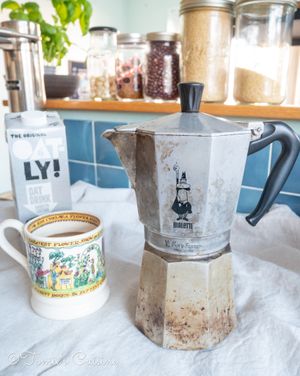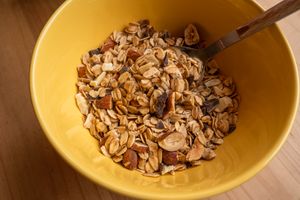It’s been cold outside, so I wanted something warm in the morning.
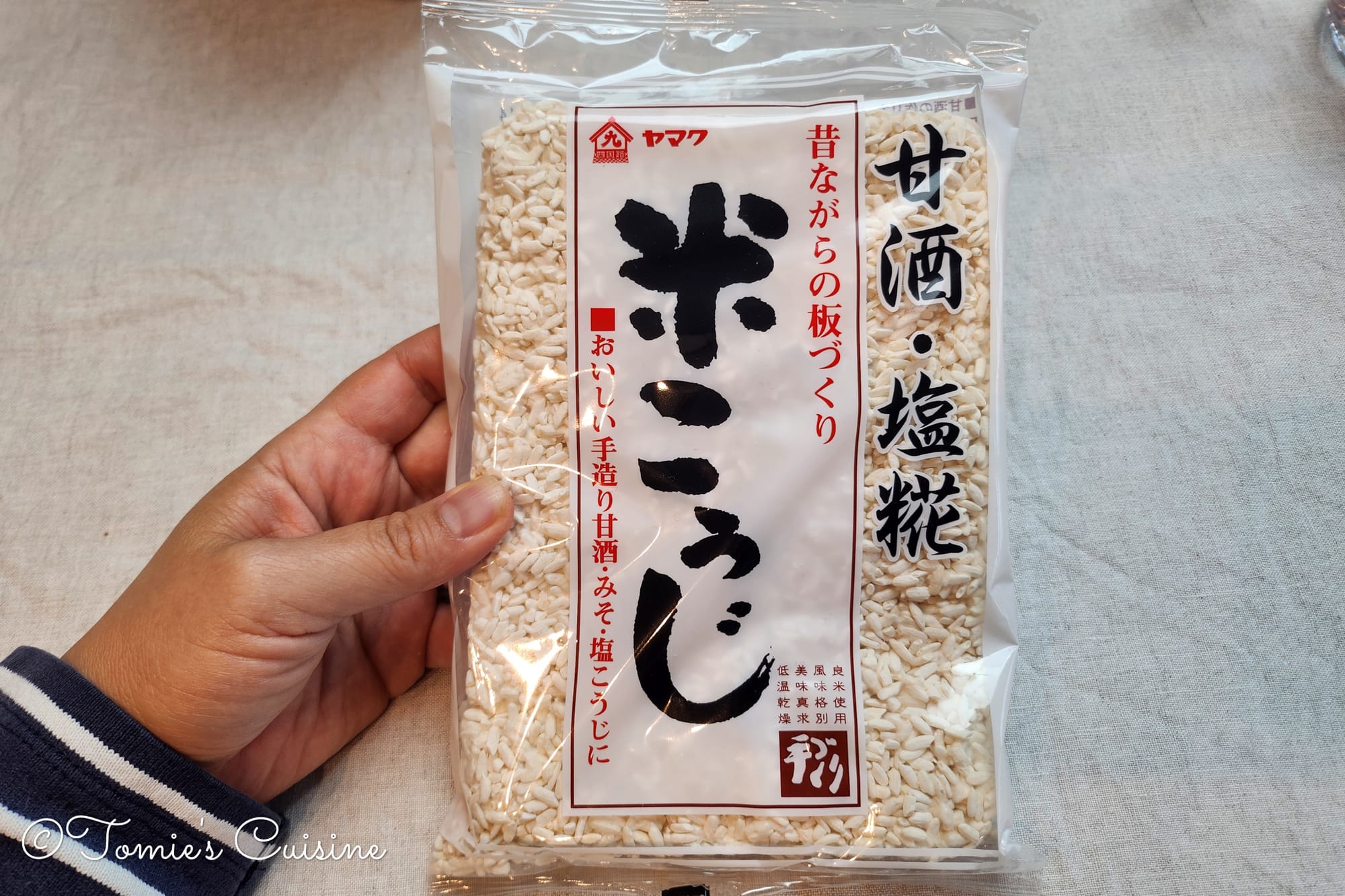
When my mother visited me in Autumn, she brought some rice koji from Japan to make koji condiments and miso.
Then I decided to make an Amazake with the rice koji. Let me show you how to make it easily with a yoghurt maker, its health benefits and how to use it.
What is Amazake
Amazake is a sweet fermented rice drink that people have enjoyed for a long time (long, long, long time) in Japan because of its health benefits. It used to be a thing for elderly people, but it became popular when people rediscovered the health benefits. The same thing happened with the koji condiments I wrote about last time.
Health benefits of Amazake
Amazake is often called “drinkable intravenous drips”
Amazake has been called this because of its high nutritional value for health and beauty.
It contains vitamin B (skin, hair and teeth), amino acids, oligosaccharides (food for good bacteria = improve intestinal condition), fibre, glucose (source of energy for brain and body) etc.
It used to be a popular drink during summer
The history of Amazake goes back to the Kohun period (250AD - 538AD). This is the very first Amazake we can find. Then during the Heian period (794AD - 1185), it was popular among the nobles in Kyoto (the capital back then) to have it cold to survive a hot summer. It became popular among the commoners during the Edo period (1603 - 1868), and they enjoyed it all year round. It was similar to an energy drink at that time because of the high glucose content.
There are two types of Amazake
Koji Amazake (This is what we are making today)
Koji Amazake is made from simply rice koji and water or rice koji, cooked rice and water. As I wrote in the article on rice koji, it is a nutritious ingredient. This Amazake does not contain any alcohol and is safe to drink for children and pregnant ladies.
Sakekasu Amazake
Sakekasu Amazake is made from Sakekasu, water and sugar. Sakekasu (also known as “Sake lees”) is the “leftover” from Japanese sake making. Japanese sake is made from rice, rice koji and water. Those ingredients are fermented and squeezed into the liquid. This liquid is sake, and the leftover paste is sakekasu. It’s full of nutrients such as vitamins, minerals, amino acids, fibre and peptides and is often used in cooking and skin care products in Japan.
Sakekasu contains alcohol, so it is unsuitable for children and pregnant ladies or before driving. Otherwise, it’s nutritious and makes your body warmer.
Easy Amazake recipe with Yoghurt maker
ingredients
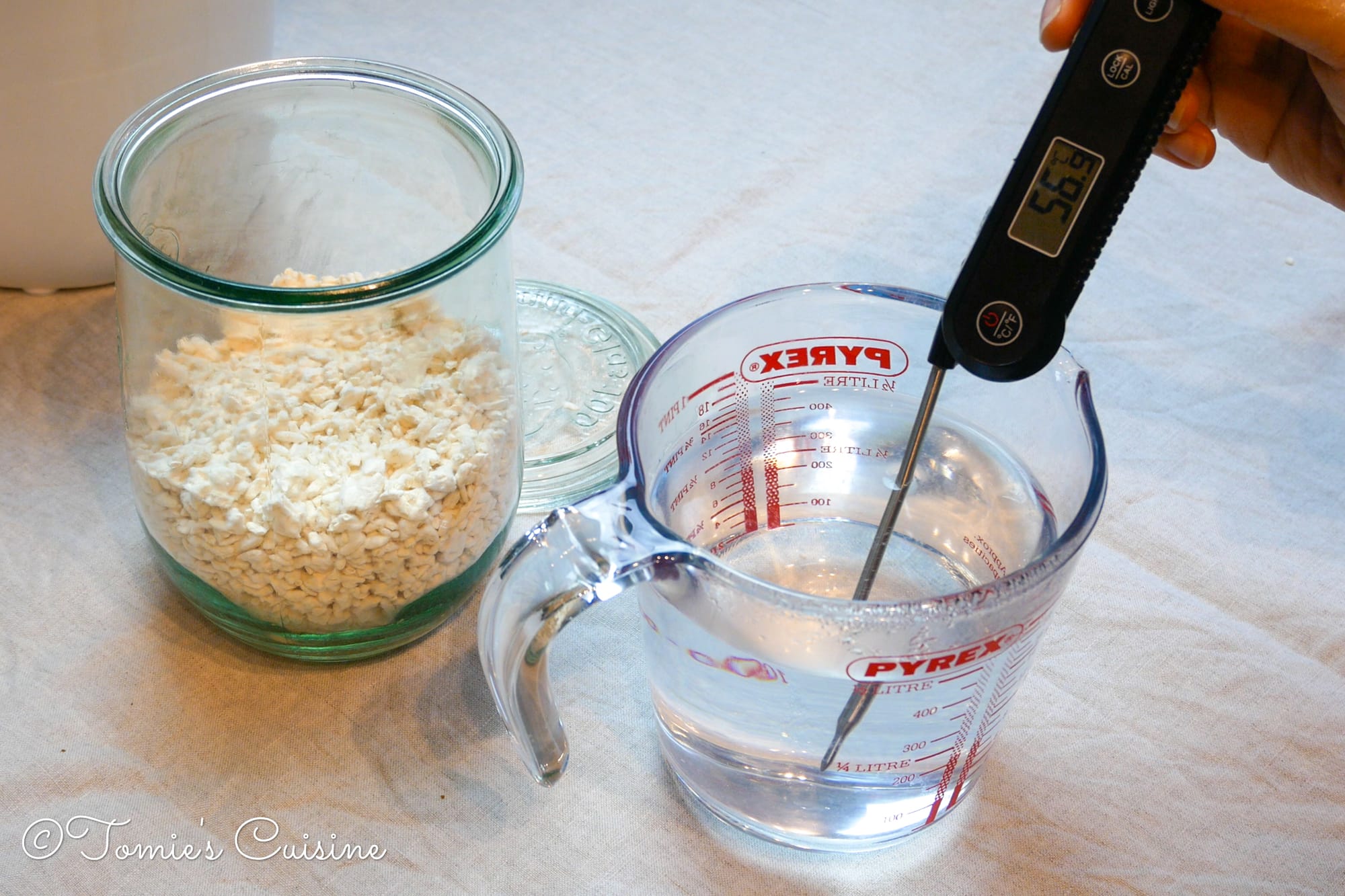
- 200g dried rice Koji (I often buy this dried rice koji. It’s big, so I can make all the other koji condiments such as onion koji, shio koji, etc.)
- 400 to 450ml of warm water (50 to 60°C)
Equipment
- Yoghurt maker (Lakeland Multi Yoghurt and Soft Cheese Maker)
(Or if you have something to keep your food warm, about 58 to 60°C, that should work!)
- Sterilised heatproof glass jar with a wide mouth (WECK 745 1062ml Tulip Storage Jar fits perfectly in the yoghurt maker!)
- Measuring jug (Pyrex Measuring Jug 500ml)
- Thermometer (Thermapen ONE Digital Meat Thermometer I think this cooking thermometer is the best among all the cooking thermometers I have used.)
Instructions
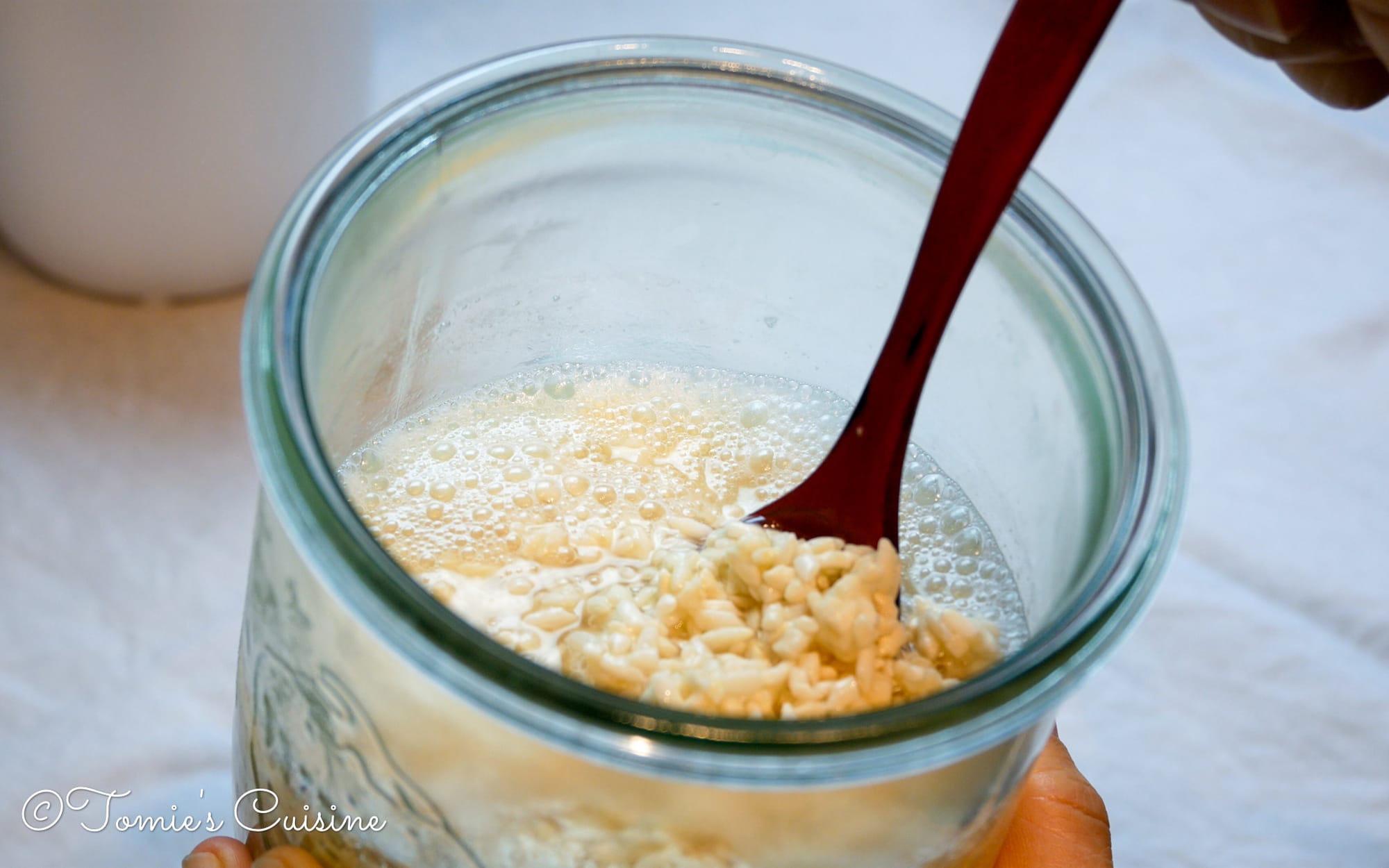
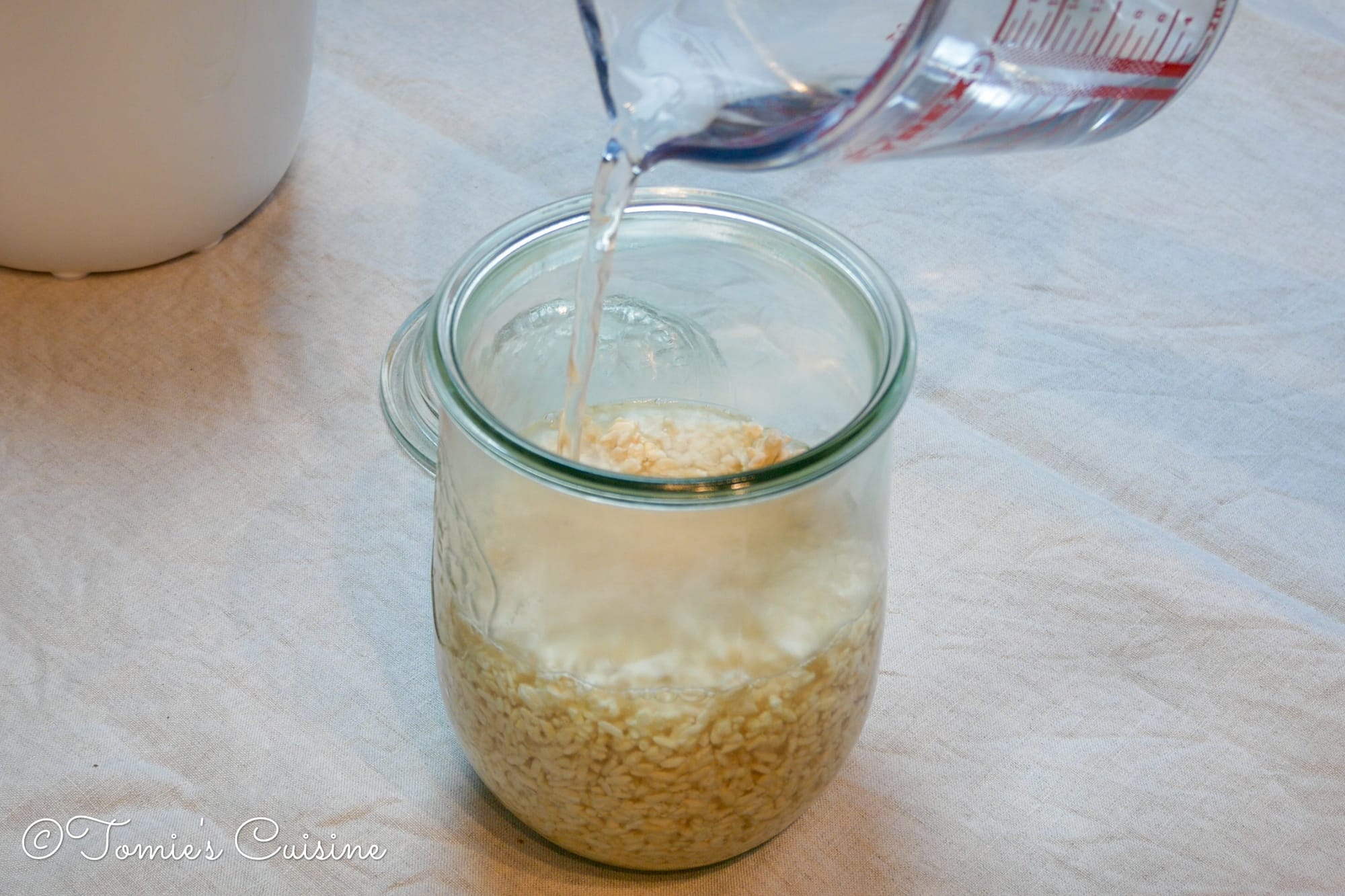
- Place the rice koji and warm water into the glass jar and mix well with a sterilised spoon. Ensure the water temperature is not too high or too low.
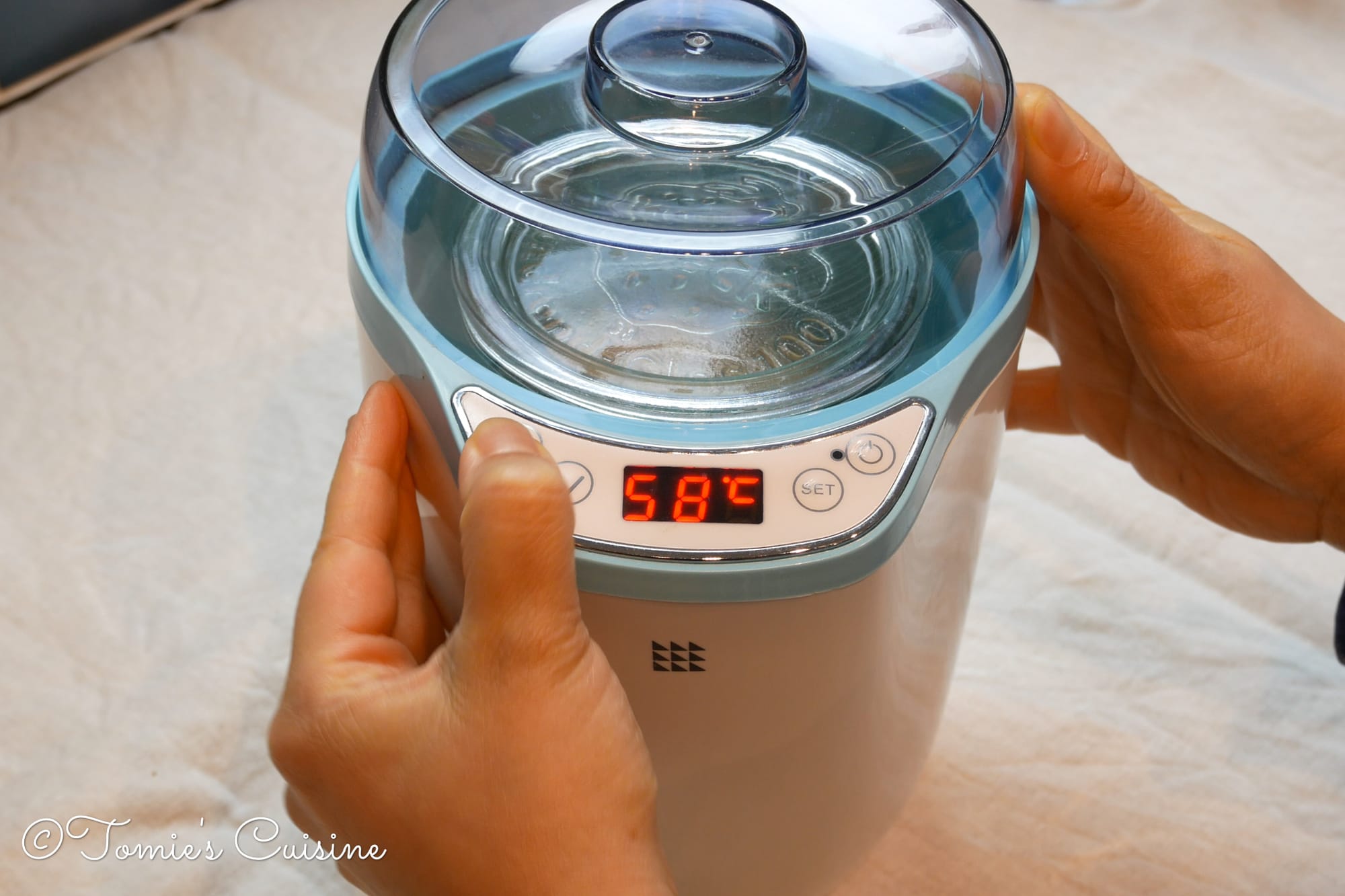
- Place the jar into the yoghurt maker and set the temperature to 58°C for 10 hours.
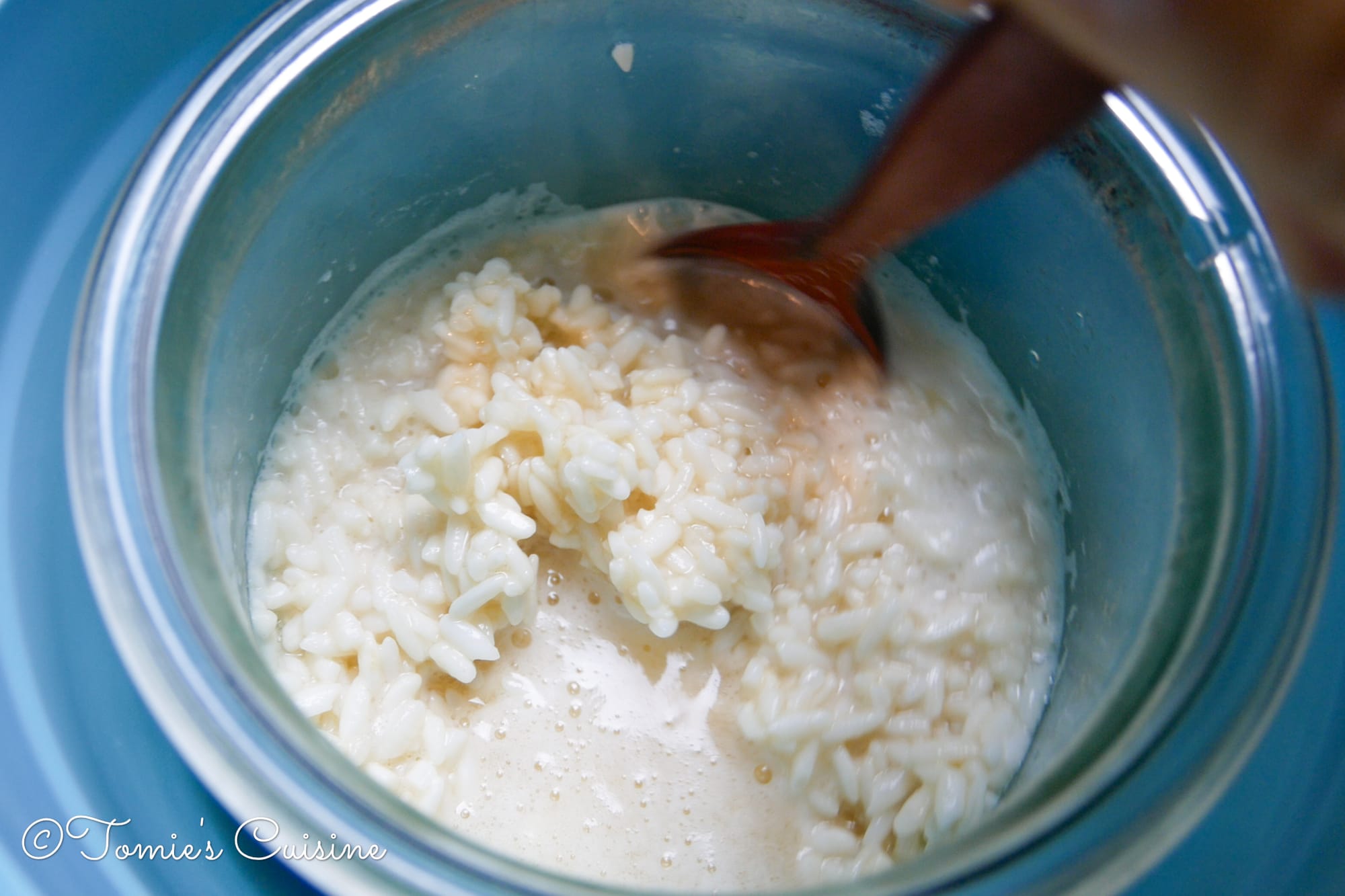
- Five hours later (preferably. I’ve done it three hours before, and it was fine.), mix the rice koji mixture so that it will ferment evenly.
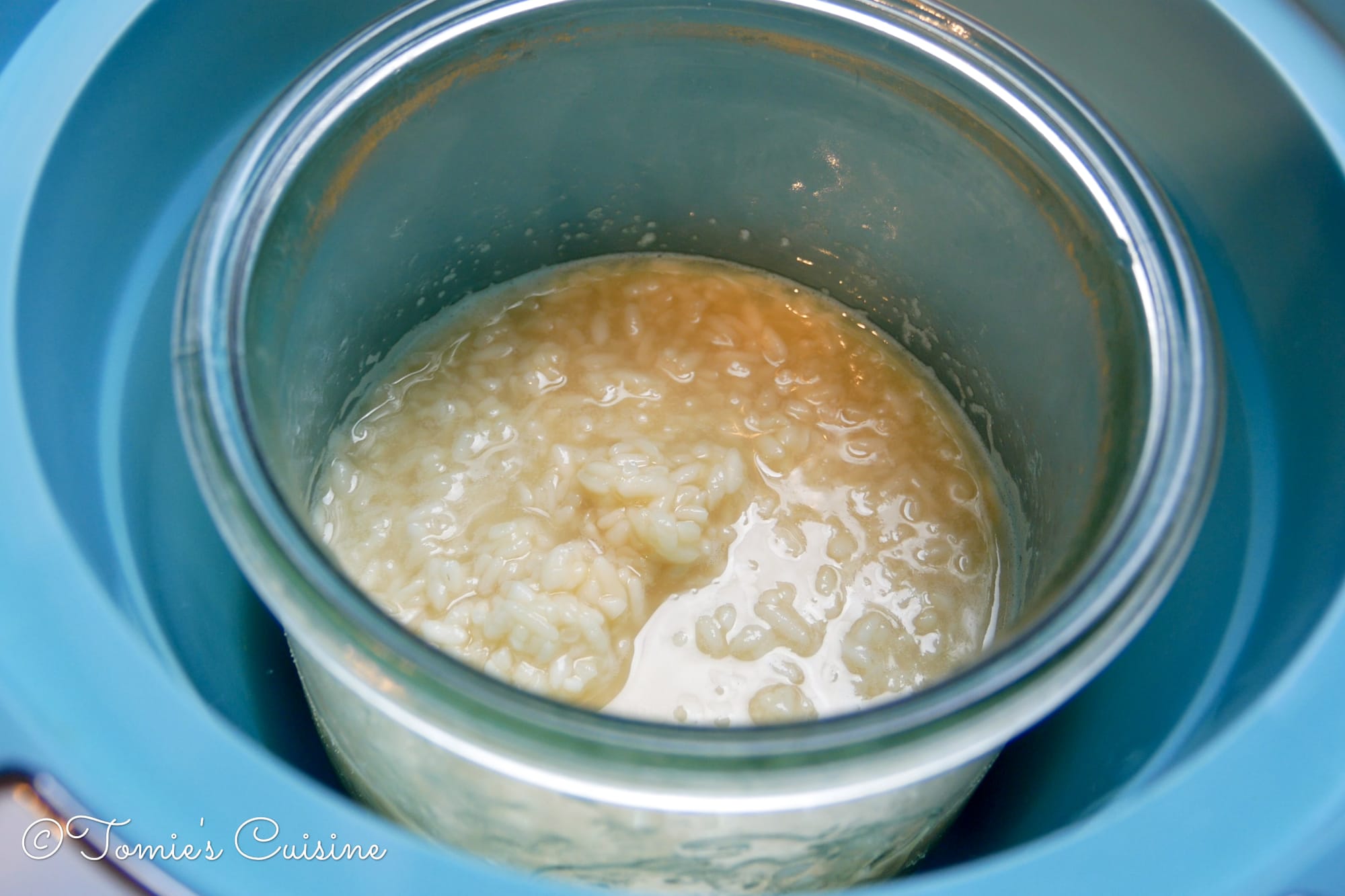
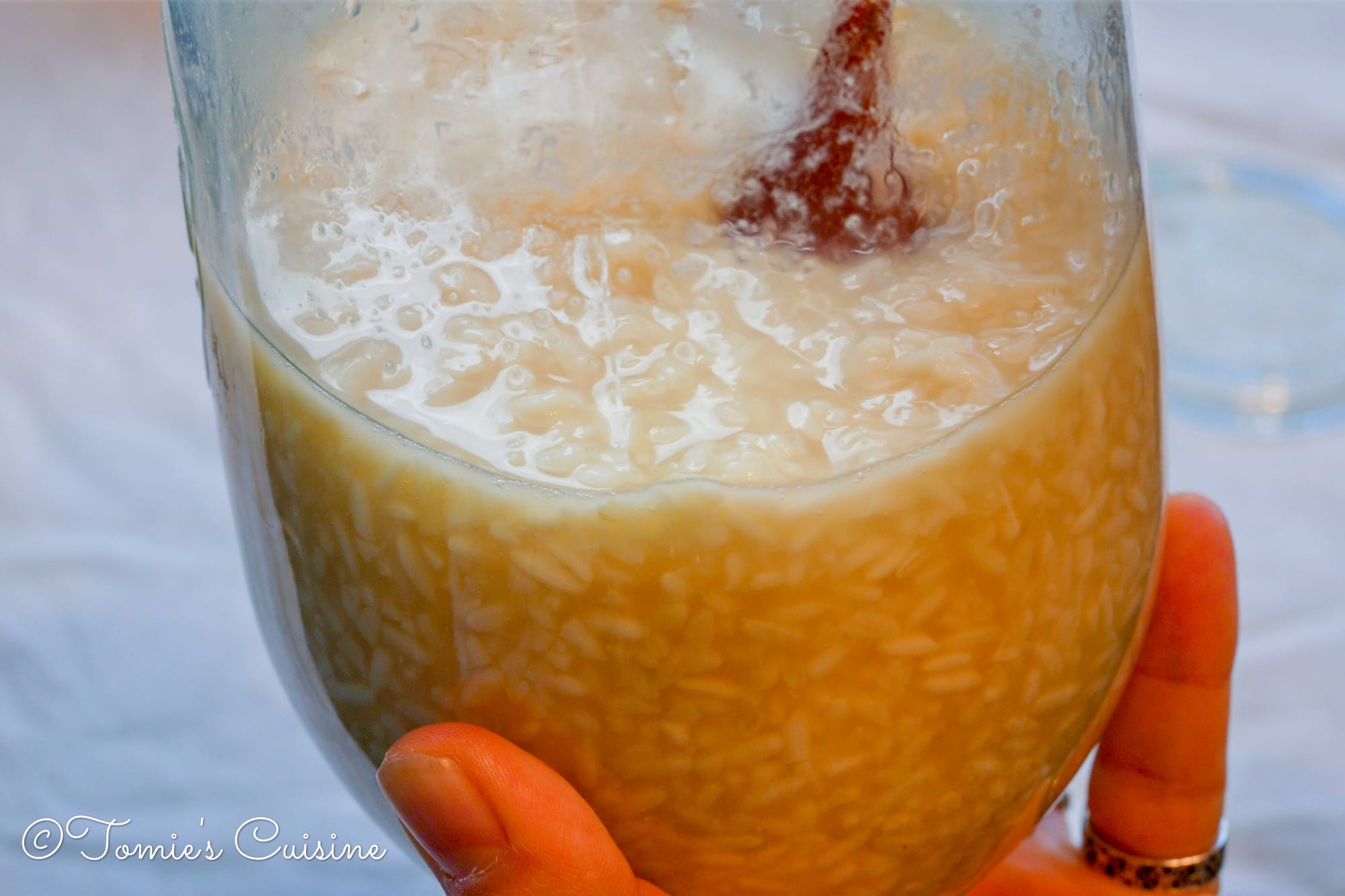
The rice koji grains are softer and have more moisture. If the grains are still hard in the middle, leave it for another hour and try again.
- Wait the rest of the time and done!
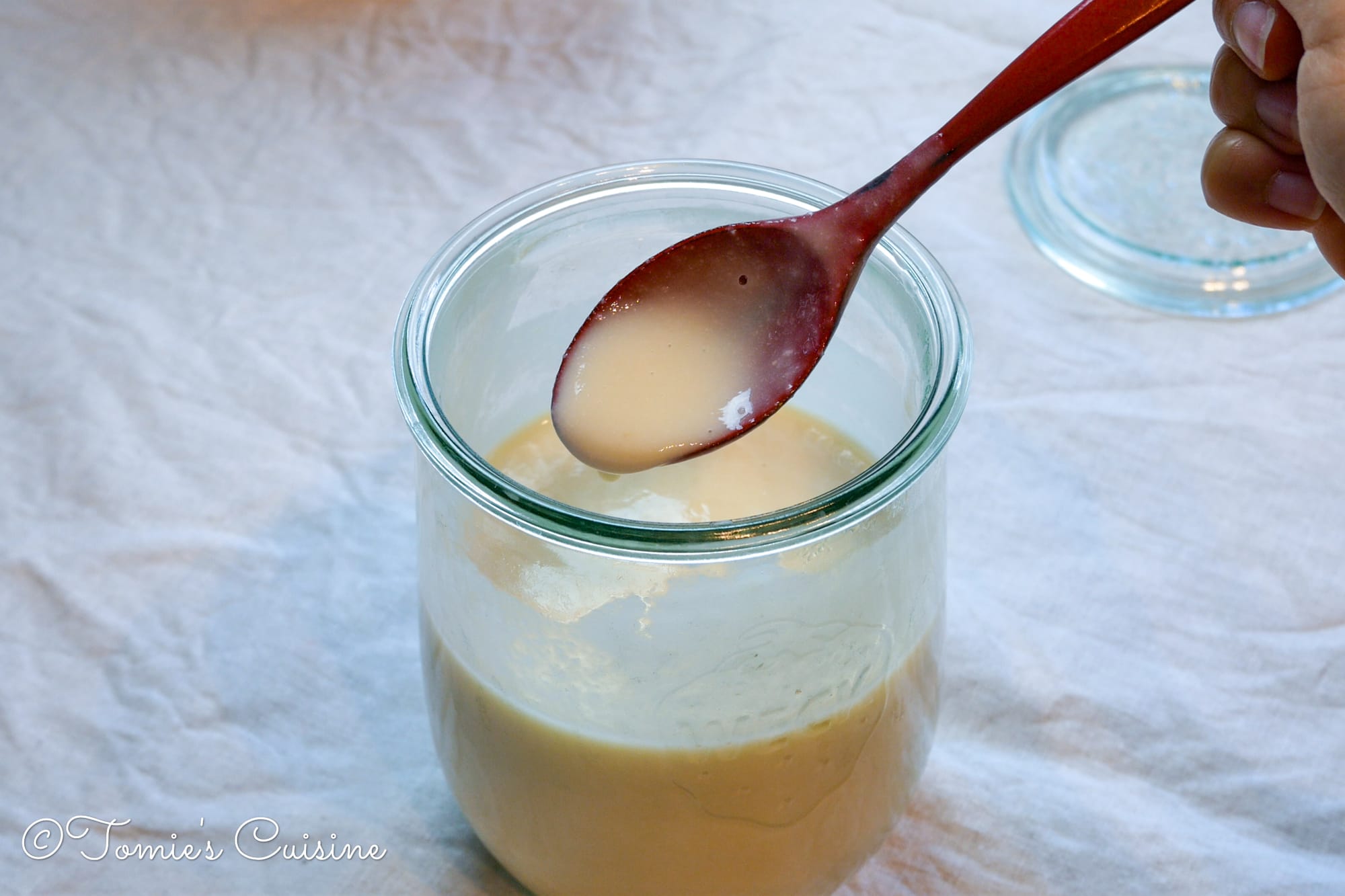
- If you prefer, blitz it to smooth paste. I found it easier to drink.
Keep in a fridge and consume within a week or less. You can also freeze it.
How to drink or use
Dilute with hot water
This is what I usually do for my Amazake drink in the morning. Very simple. Try a 1:2 ratio with 100ml Amazake and 200ml hot water. If you don’t want to kill the enzyme, cool it down to around 50-60°C. You can adjust and find your preference.
With milk
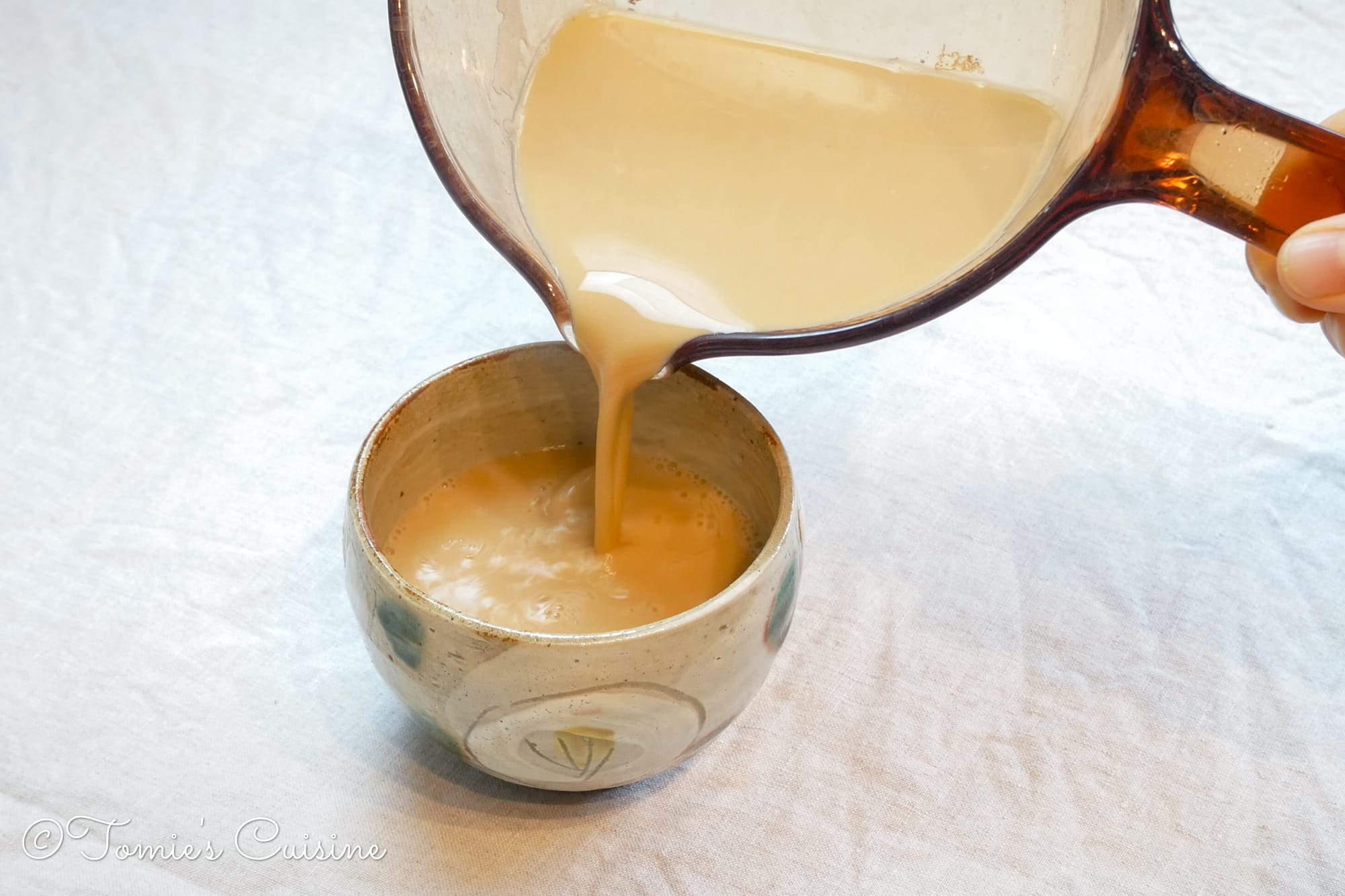
I love creamy amazake with milk. We generally don’t have cow milk in our fridge, so I mix it with oat milk most of the time, but soy milk pairs well, too. Simply warm some of your favourite milk, and mix some Amazake. When heating milk, you can add some spices, such as cinnamon, ginger, cardamom, etc., to make it even warmer.
Alternative to sugar
Adding amazake as an alternative to sugar works, too. Try to add 2 to 3 tablespoons of Amazake instead of 1 tablespoon of sugar. You will get a gentle sweetness in your dish or drink. I often use this to make teriyaki dishes or miso marinade for fish.
You must remember
Don’t consume too much amazake
Amazake is a nutritious drink, however, it’s high in carbohydrates. Aim for 100ml to 200ml a day.
It can be an alcoholic beverage (Sakekasu Amazake)
As I mentioned in the sakekasu amazake section, this amazake contains alcohol. It’s unsuitable for children, pregnant ladies and drivers.
The Amazake in this recipe is made from only rice koji and water, so does not contain any alcohol.
Science science science
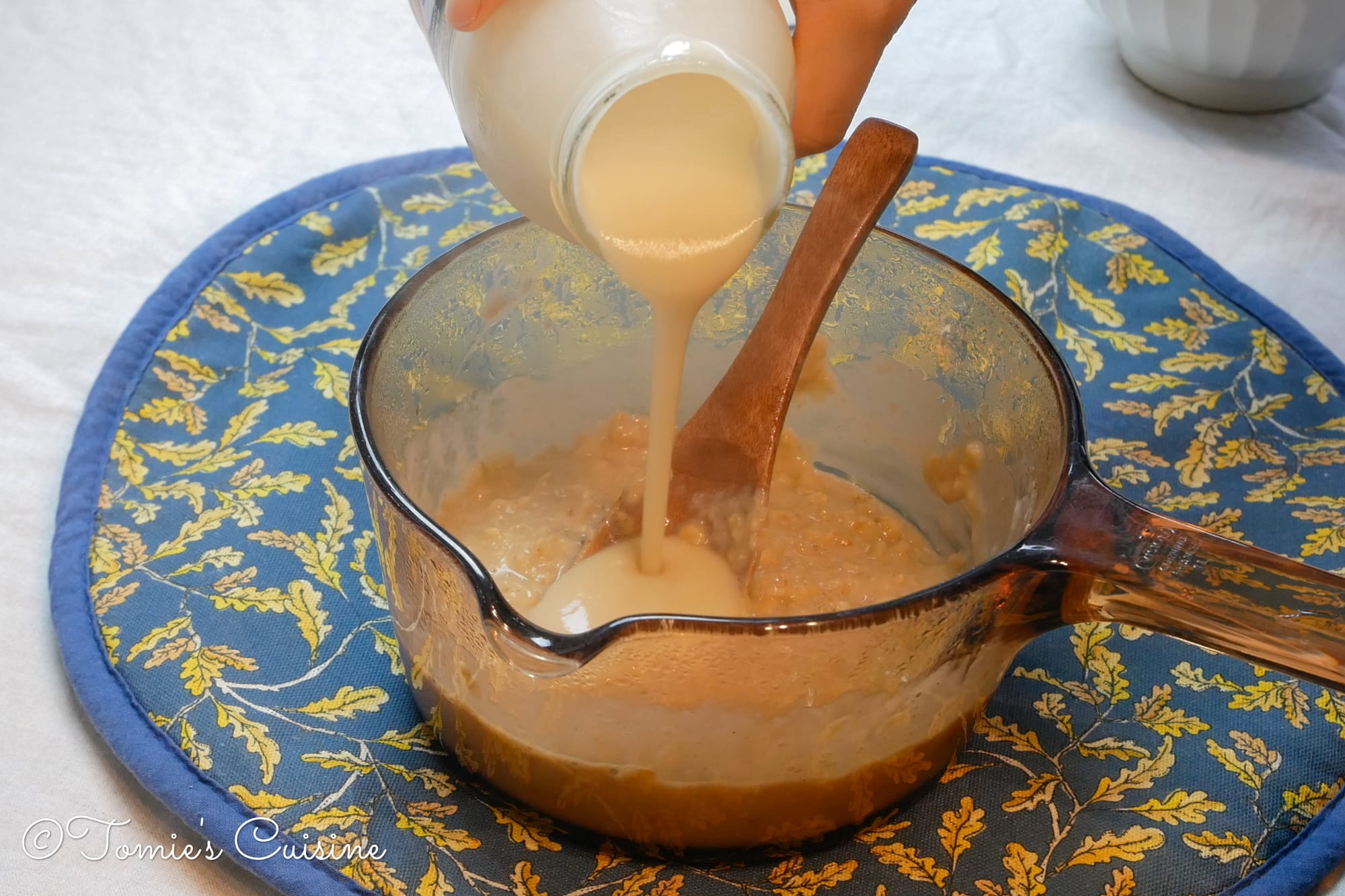
I said you can use it as an alternative to sugar, but if you add it to your porridge at the end, it will turn into a porridge soup! The glutenous part of the porridge disappears. Yes, this happened to me! Silly me.
If you read my Shio Koji recipe article, you can see that I explained that the koji bacteria has a unique element in making meat softer when you marinate it. This is because its enzyme works on the protein and amino acids.
So this happened to my porridge. When cooking porridge, it gets glutenous, as you know. Then I added fresh amazake, which contains the enzyme, and it started breaking down the starch into glucose. It wasn’t really nice to have a watery porridge for my breakfast.
Even when I tried to make a bechamel with onion koji, I added it at the end, which ruined the thickening part of the bechamel. That was so sad.
Closing words
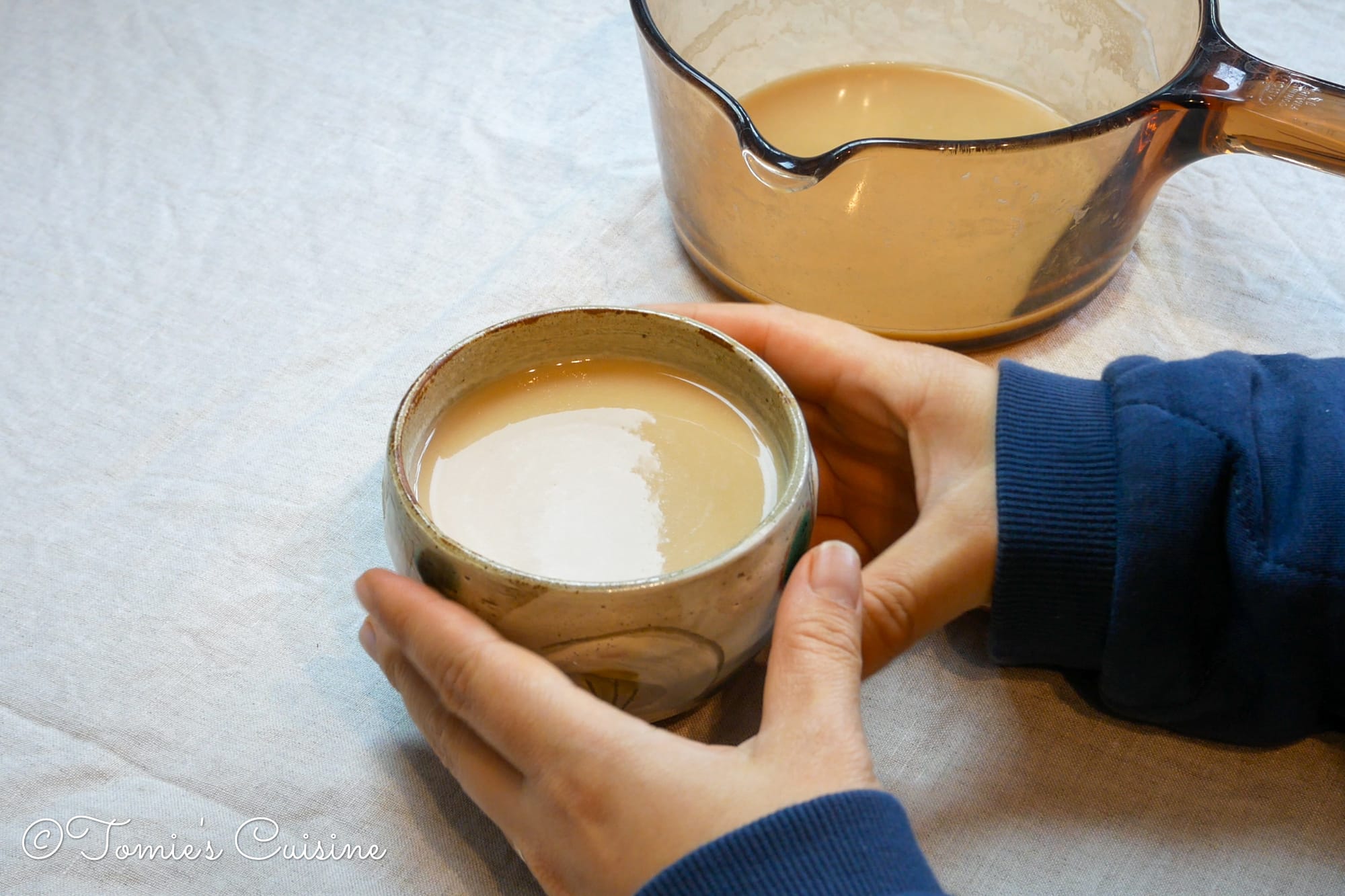
Those koji condiments are great to have as an everyday ingredient. Please remember the not-so-nice things I experienced and have a great and healthy koji life!
If you want to know anything else about Amazake, please leave a comment on our Instagram, Pinterest, or Facebook pages. We will try our best to answer! Don’t forget to subscribe to our newsletter so you don’t miss our future blog posts about other recipes, eco-friendly tips and travel.
See you in the following article!

